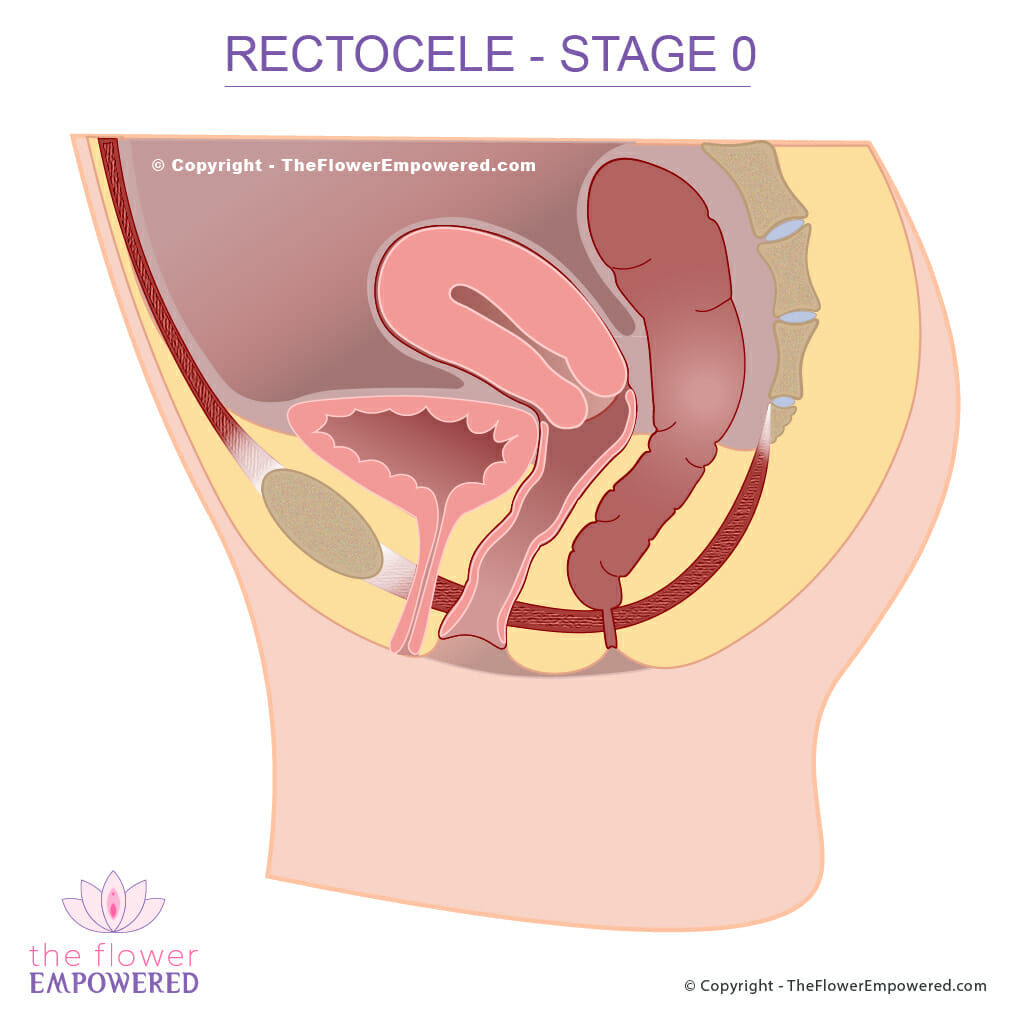Rectocele
A rectocele (also known as a posterior prolapse) is a hernia on the back wall of the vagina resulting in the rectum bulging into the vaginal passage. Rectocele is often measured in stages ranging from stage 1 which is a minor prolapse, to stage 4 which is complete prolapse. If you are suffering from one type of pelvic organ prolapse, the pull on your organs and connective tissues can also cause other prolapses to occur. It is very important to begin pelvic floor muscle training as soon as possible. This helps to restore the pelvic floor to it’s normal resting length, while strengthening your pelvic floor and reducing your symptoms.
Because a rectocele causes the rectum to be pushed/pulled into the vagina, bowel function is often impacted. You may experience constipation like symptoms and often feel like the bowel has not completely emptied. Sometimes women with rectocele have to splint by pressing the rectum from inside the vagina in order to poop. Straining from constipation can increase the stage of pelvic organ prolapse due to the increase in intraabdominal pressure. It is very important to have sufficient fiber in your diet which can help to maintain soft and easy to pass stools. You can use the Bristol Stool Scale to check the consistence of your poop. Rectocele symptoms can also have negative impact on sexual function.
Grades of Rectocele
When looking at these images, you should know that they show the prolapse when under increased intraabdominal pressure. Under normal conditions, without increased pressure, the organs and tissues don’t bulge in the same way. The exception is severe prolapse where bulge may always be present. In the case of rectocele, feces can also cause bulging and a feeling that there is something in the vagina.
Stage 0 (No Prolapse)

Stage 1 (Mild Prolapse)
Stage 2 (Moderate Prolapse)
Stage 3 (Severe Prolapse)
Considerations When You Have Rectocele
If you are suffering from a rectocele, it is critical to keep avoid constipation, maintaining soft stools and avoiding the need to strain. Having a pelvic organ prolapse is an indication that the pelvic floor is sitting lower than normal. It usually also indicates that the connective tissue structures within the pelvis have are being stretched/pulled. By working to increase the strength of your pelvic floor muscles, your pelvic floor will sit higher. When you combine pelvic floor muscle training with hypopressive style breathing exercises, you can make a positive difference to the grade of you prolapse. Connective tissue takes longer to repair than muscle fibres, but they do respond given sufficient time.
Consistency is key with any exercise program, so make sure to be consistent if you would like to see results. You can find many videos on our YouTube channel giving tips on preventing constipation as well as sharing pelvic floor exercises and hypopressive techniques. When practiced consistently over time, these exercises can help to reduce your symptoms of pelvic organ prolapse1.
Treatment for Rectocele
The treatment for rectocele, like most other forms of prolapse falls into one of two categories; conservative (non-surgical) and invasive (surgical). Surgical options are generally only advised when the rectocele is severe (grade 3 or 4). For more information on the different treatments conservative and invasive treatments offered, click on the button below. If you didn’t find what you were looking for on this page, the search bar at the bottom of the page will allow you to search the entire site.
Explore the Other Types of Pelvic Organ Prolapse
Having reviewed the Rectocele, you may be interested in exploring the other types of prolapse. You can do that from here:
References
- Bernardes BT, Resende AP, Stüpp L, Oliveira E, Castro RA, Bella ZI, Girão MJ, Sartori MG. Efficacy of pelvic floor muscle training and hypopressive exercises for treating pelvic organ prolapse in women: randomized controlled trial. Sao Paulo Med J. 2012;130(1):5-9. doi: 10.1590/s1516-31802012000100002. PMID: 22344353.